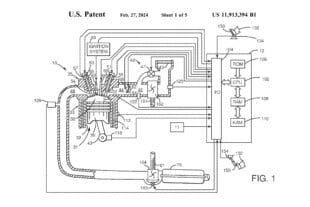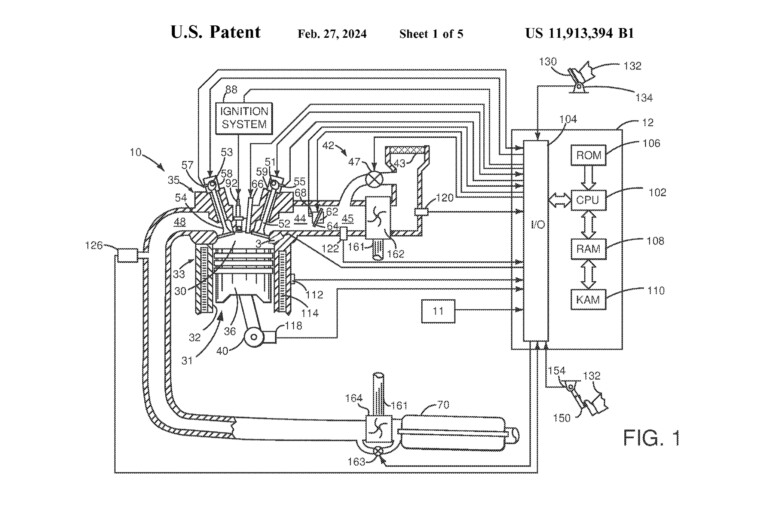With Chevy’s announcement back in 2008 that the V6 Camaro would have 300+ plus horsepower, you knew the Mustang engine team would have to play catch-up on the new base Mustang powerplant. When it was finally revealed in November 2009 that the 2011 Mustang would top out at 305 horsepower, Mustang fans knew Ford was serious about the pony car horsepower wars.
While its V8 big brother is currently taking up a majority of the spotlight, the new Mustang Duratec 3.7-liter (227 cubic inch) V-6 engine deserves its share of attention from performance enthusiasts. Especially performance enthusiasts on a tight budget. With the 2011 V6 priced at just over $22,000, it’s $8,000 cheaper than the Mustang GT and the monthly insurance rate is much more affordable than the GT. The fact that it makes 305hp at 6,500 rpm and 285 lb-ft of torque at 4,250 rpm makes it equal in performance to some of the heavy hitter Mustangs of yesteryear. The 1996-1998 SVT Cobra’s 4.6 liter engine was rated at 305 horsepower and the 2005 Mustang GT was rated less than the new V6, at 300 hp. All that power combined with a 30 miles per gallon highway fuel economy rating makes it a great value in our book.
V6 Brings Historic Cleveland Plant Back to Life
While we doubt the new Mustang V6 will ever be as famous as the 351 Cleveland, the engine has brought new life to the historic Ford engine plant. The Cleveland Engine Plant No. 1 has produced more than 35 million Ford engines since 1951 and got the nod in 2009 to build the Duratec V6 and its “boosted brother”, the EcoBoost V6.
Ford spent around $121 million in retooling the plant manufacturing systems and another $34 million for the launch and engineering of the Mustang V6 engine. Ford expects the V-6 engine to make up two-thirds of the Mustang sales in 2010 and beyond.

Photo Credit: Ford The Duratec V6 engine is new to the Mustang S197 platform. Rated at 305 horsepower, the base car now matches the 1996-1998 SVT Cobra power output.
The 3.7-liter V-6 engine has been in the Ford line-up for a few years and was used in a front-drive configuration in the Ford Edge and Lincoln MKX. Called for duty in the new Mustang platform, it’s been turned 90 degrees into a rear-drive engine set-up and updated with several new parts to appeal to the Mustang customer. New performance parts include a beefier aluminum block, forged steel crankshaft, 10.5:1 notched pistons and a lightweight composite intake manifold.
In the power department, the new engine makes 82 horsepower per liter of displacement, versus the old 4.0-liter pushrod engine’s 52 horsepower per liter. A 57-percent improvement in the efficiency factor should have V8 diehards giving the base mustang a look. A big contributor to the efficiency of the engine is the newly designed valvetrain as the V6 features variable intake and exhaust cams and the latest in overhead cam technology.
Cylinder Block is Ready to Rock
For cylinder block updates, the V6 incorporates a 60-degree engine design that is narrower than the 90-degree layout and allows it to fit easily in an engine cradle that’s designed for a 5.0-liter or 5.4 liter mod motor. With all that room it should be easy to install aftermarket power parts like headers or turbos and don’t be surprised if Ford goes turbo in the next few years.
The block also features additional ribbing and the forged steel crank is held in place by six-bolt main bearing caps to prevent crank walk at high RPMs.

The aluminum block includes go fast mods like; 6 bolt main caps, piston oil squiters and extra ribbing in critical areas.
Anther feature borrowed from high performance race engines is oil squiters mounted in the block. These shooters direct a stream of oil at the base of each piston wall. The oiling jets allow the engine to run a higher 10.5:1 compression ratio, while helping cool the piston. In addition to the oiling updates in the block, the engine is capped on the bottom end by a die-cast deep-sump aluminum oil pan.
The rotating assembly includes cast aluminum fly cut pistons with forged steel connecting rods anchoring the slugs to the forged crank.
Cylinder Heads Showcase Fords Latest Variable Cam Technology
The heads on the new V6 engine is where the real power comes from. It uses four valves per cylinder and double-overhead camshafts, a first for the base mustang engine. The engine features, what Ford calls Ti-VCT, variable valve timing on both intake and exhaust valves.

Ti-VCT camshaft control gives the engine its power and 31 mpg fuel economy rating.
This cam technology allows a full 60 degrees of cam timing adjustment on the intake side and 50 degrees on the exhaust side, allowing the engine to produce big power, clean emissions, and excellent fuel mileage.
The V6 valvetrain uses a direct-acting mechanical bucket (DAMB)tappet between the camshaft lobe and the valve tips, a design that reduces valvetrain friction and improves engine efficiency.

Intake and exhaust valves are opened and closed via Ford’s DAMB tappet system. Intake port is placed high so air and fuel have a straight shot to the intake valve.
The V6 aluminum cylinder heads use an intake port design that is much higher in the casting and allows for a straighter shot of air and fuel to reach the combustion chamber. Fuel injectors are rated at 29-lb/hr and shoot fuel directly at the back of the intake valves. On the exhaust side of the cylinder heads, cast iron manifolds direct spent exhaust gasses to the catalytic converters that are part of a true dual exhaust system.
Air Induction

Aftermarket part manufacturers take note, Ford forecasts 66% of 2011 Mustangs will be equipped with the new V6 engine.
The V6 intake manifold is a lightweight composite piece thats topped off by a 68mm single bore throttle body that is activated by an electronic throttle control. While some might question the durability of a plastic intake, Ford has been using plastic intakes for years with no major leakage issues. Plastic has proven to be cheaper the produce than aluminum and its lightweight helps cut down on excess overall weight of the car. Fuel delivery is via a sequential multi-port electronic system and the ignition is distributorless with a typical coil-on-plug arrangement.
Aftermarket Possibilities
It’s too early in the game to see if aftermarket manufacturers will step-up and produce parts for the V6 Mustang. Most shops are busy trying to get their hands on a 2011 Mustang GT for parts development. In the past, the 4.0 liter V6 never really generated that much business for aftermarket performance parts manufacturers but in reality the 4.0 liter pushrod engine was considered a dog by most Mustang enthusiasts. The new V6 makes as much horsepower per liter as the 5.0-Liter V8 so it has potential, especially with its nearly all-forged internals. We anticipate some shop or Mustang enthusiast will dare to be different and push the V6 past the 400+ horsepower mark with some type of forced induction. The return of an Ecoboosted SVO Mustang project makes perfect sense to us.
















